Abstract
A study population of 3086 employees was identified in 18 carbon black production plants in seven European countries. Respiratory health questionnaires, spirometry, and chest radiographs were used to estimate effects on health and personal monitoring procedures were employed to measure current exposure to inspirable and respirable dust along with sulphur and carbon monoxide. The low concentrations of gaseous contaminants made the generation of their current and cumulative exposure indices impossible. Low responses from some plants restricted the final analysis to 1742 employees in 15 plants (81% response rate) for respiratory symptoms and spirometry, and 1096 chest radiographs from 10 plants (74% response rate). In total, 1298 respirable and 1317 inspirable dust samples, as well as 1301 sulphur dioxide and 1322 carbon monoxide samples were collected. This study is the first to include a comprehensive and concurrent assessment of occupational exposure to carbon black dust and its associated gaseous contaminants. Cough, sputum, and the symptoms of chronic bronchitis were found to be associated with increasing indices of current exposure. Lung function tests also showed small decreases in relation to increasing dust exposure in both smokers and non-smokers. Nearly 25% of the chest radiographs showed small opacities of category 0/1 or greater. These were strongly associated with indices of cumulative dust exposure. The findings are consistent with a non-irritant effect of carbon black dust on the airways combined with dust retention in the lungs. Further cross sectional studies are planned to investigate whether long term exposure to carbon black dust causes damage to the lung parenchyma.
Full text
PDF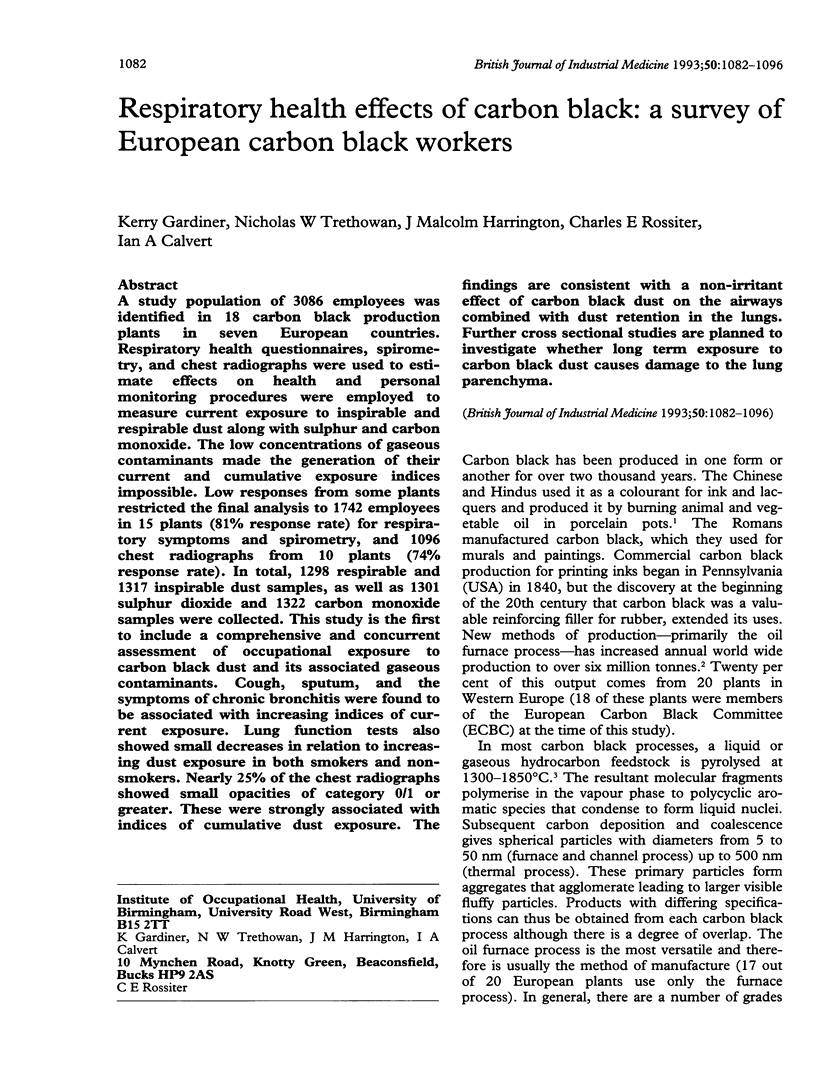
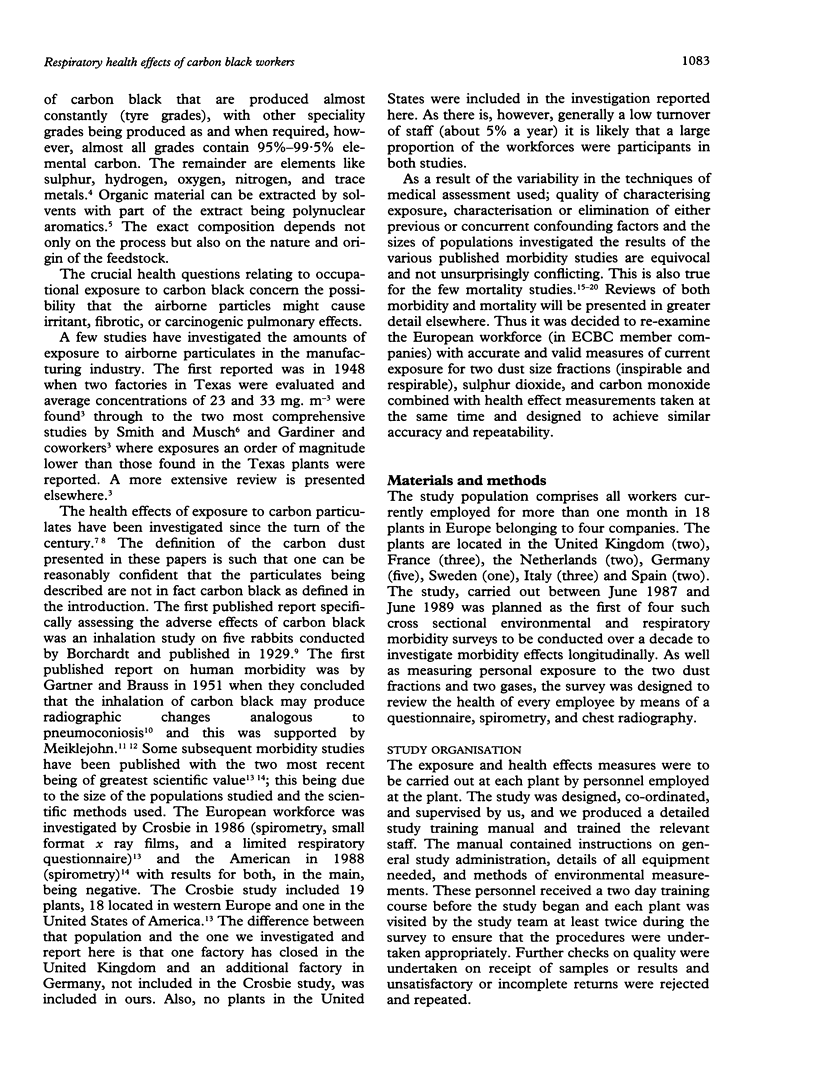
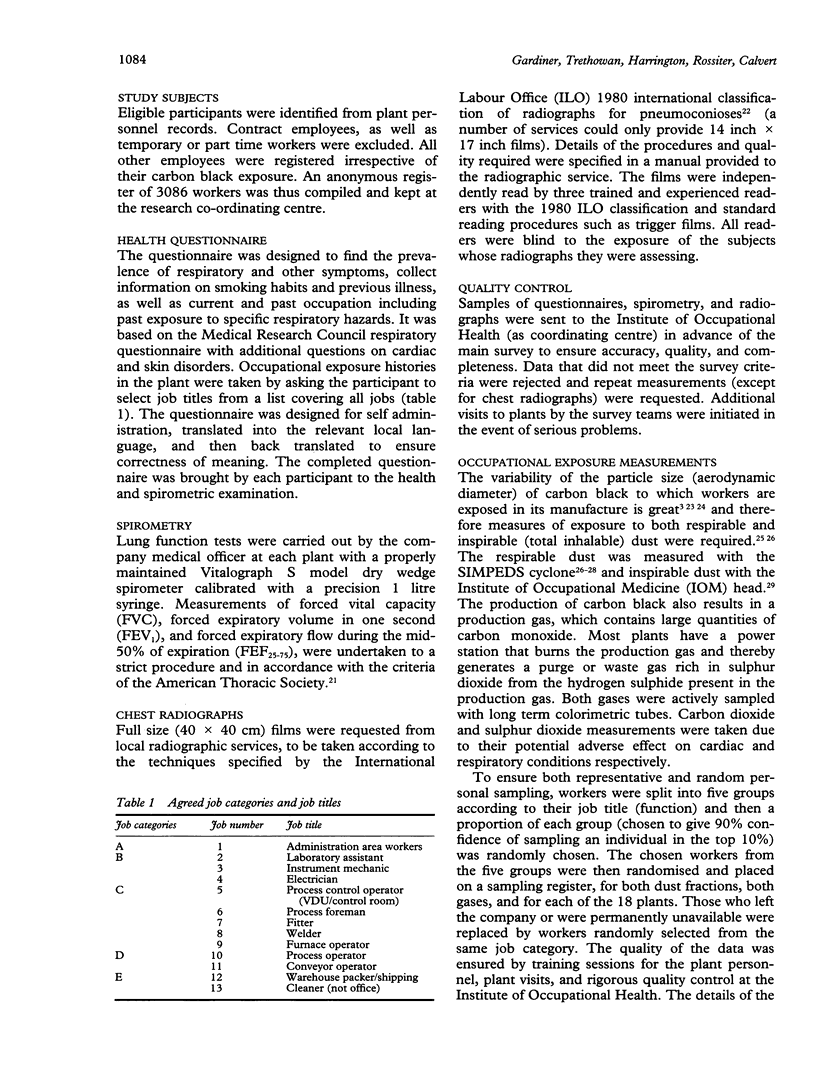
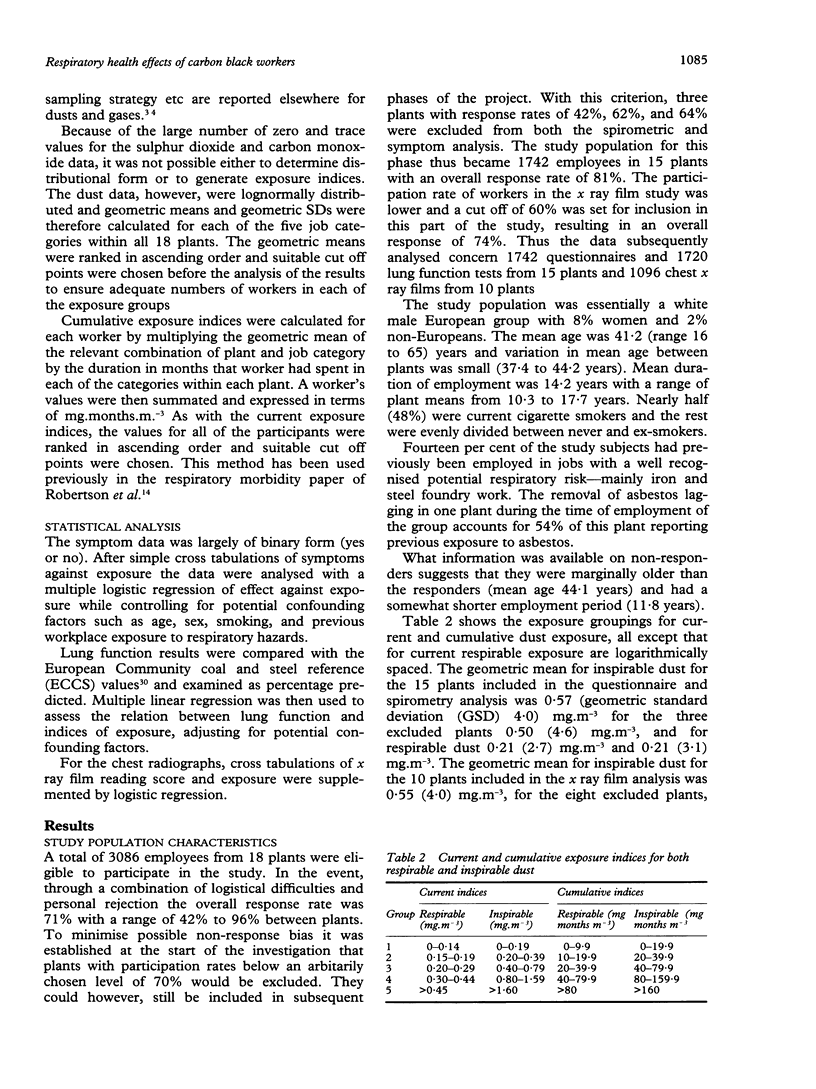
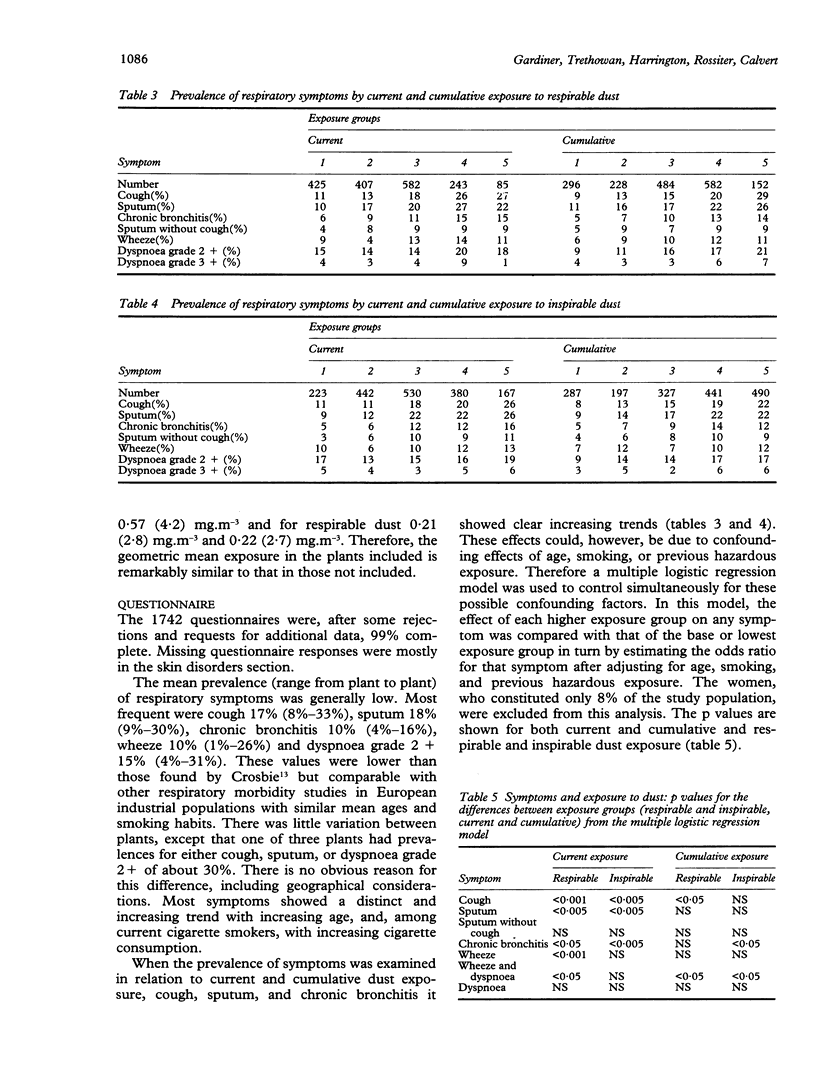
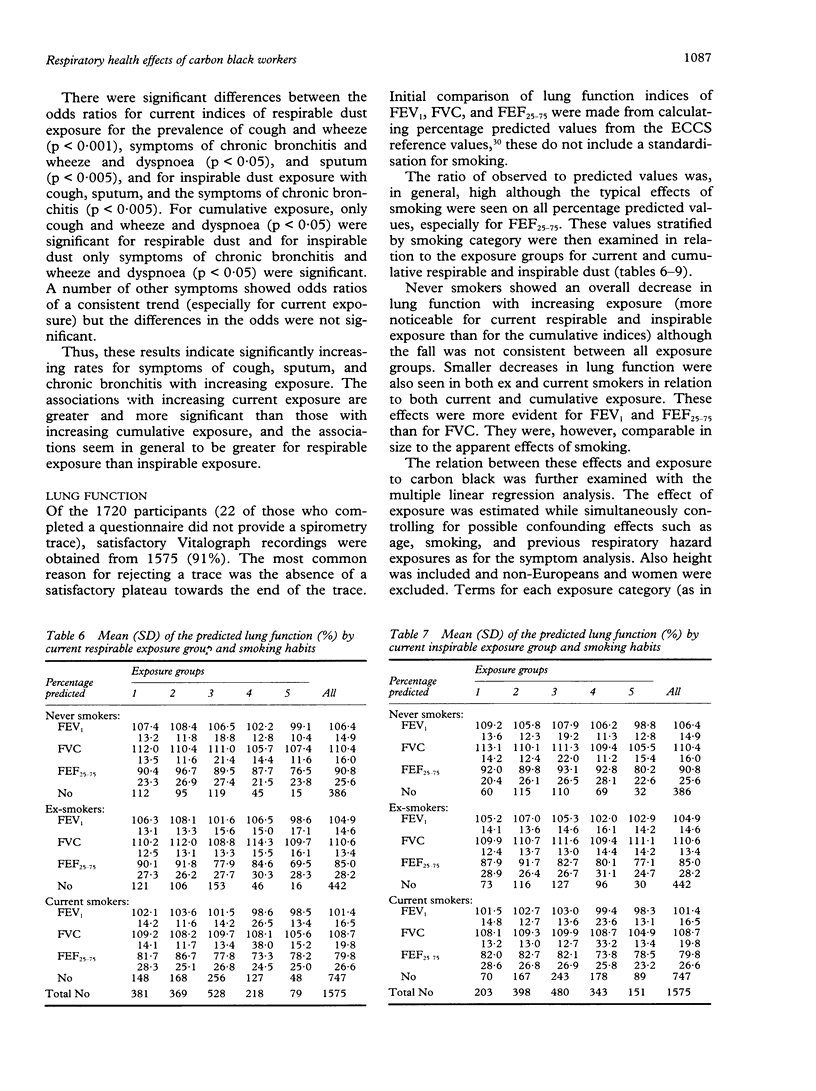
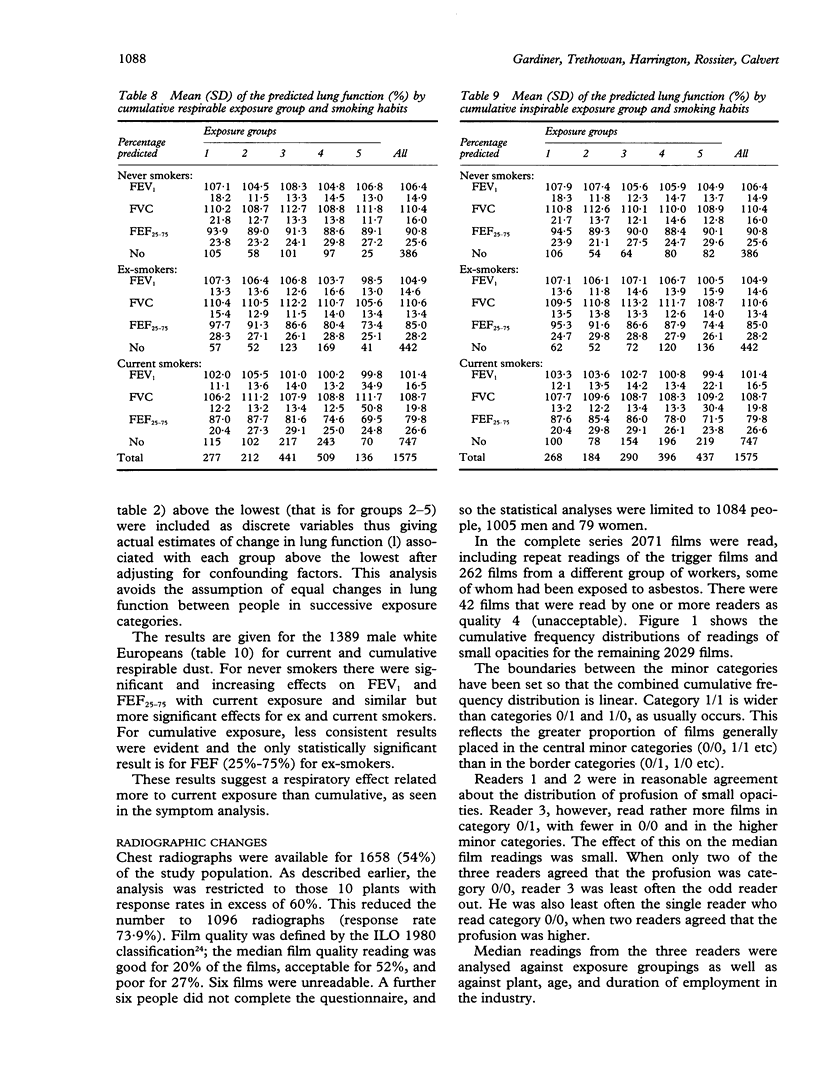
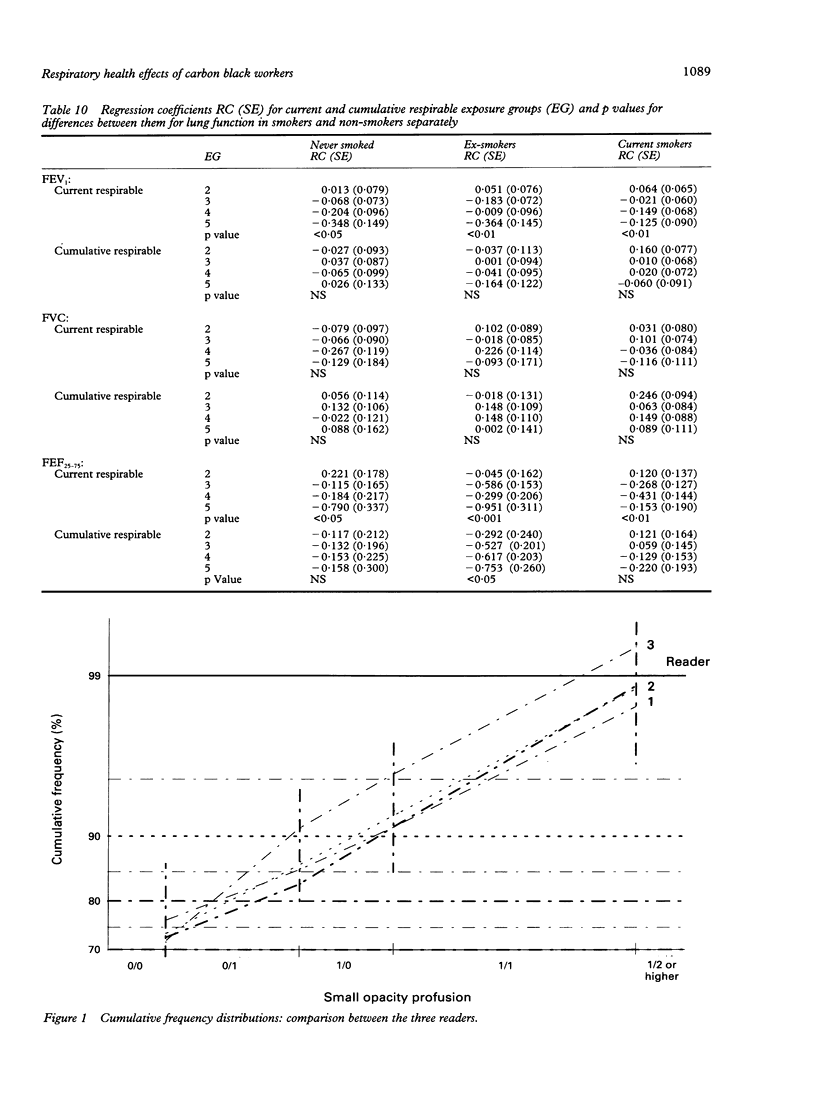
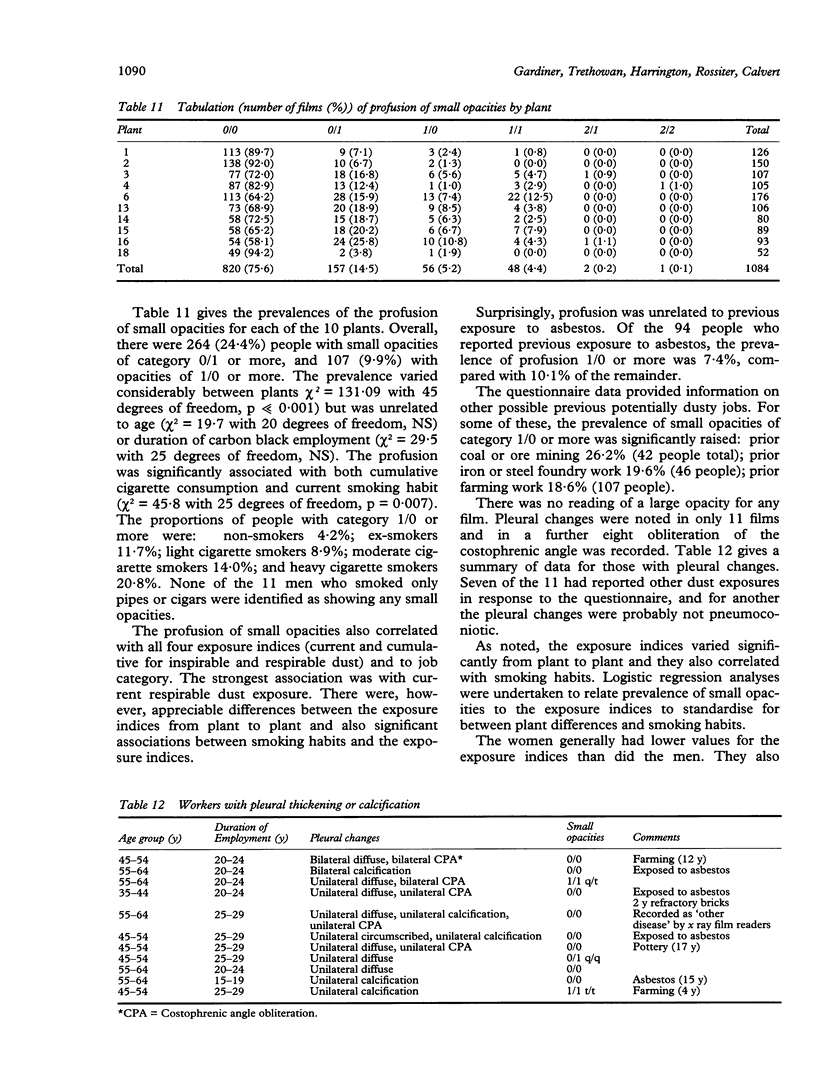
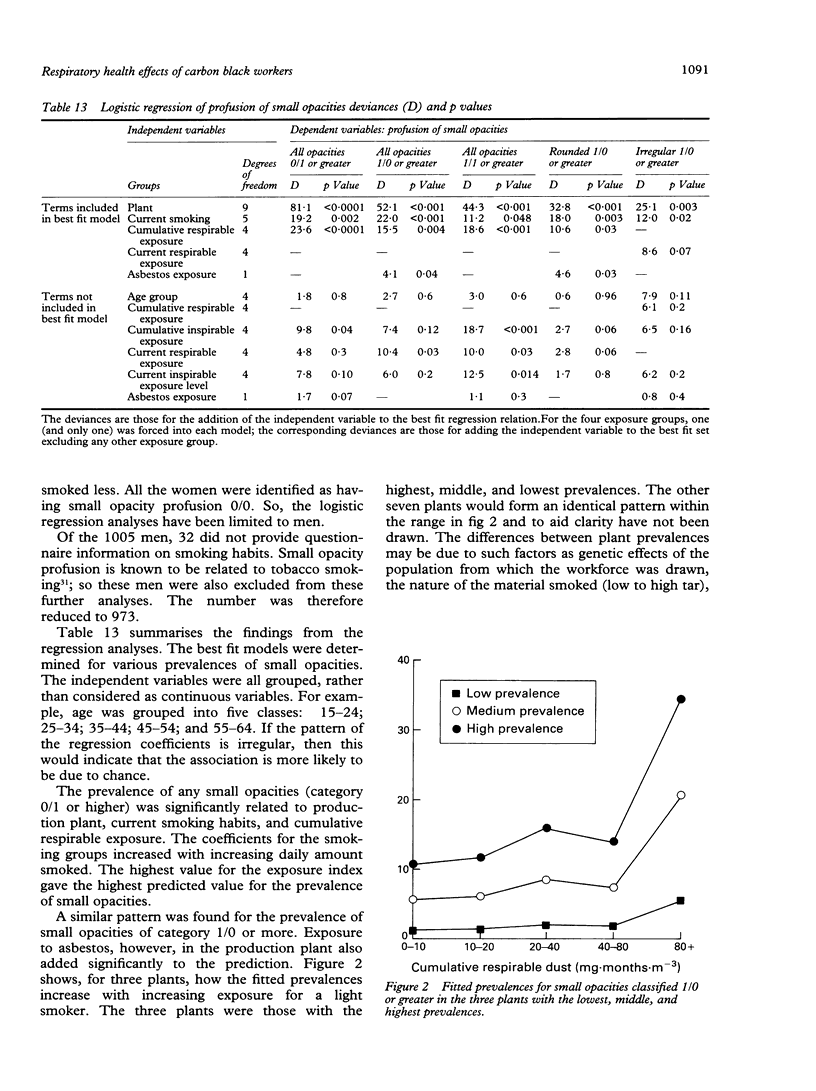
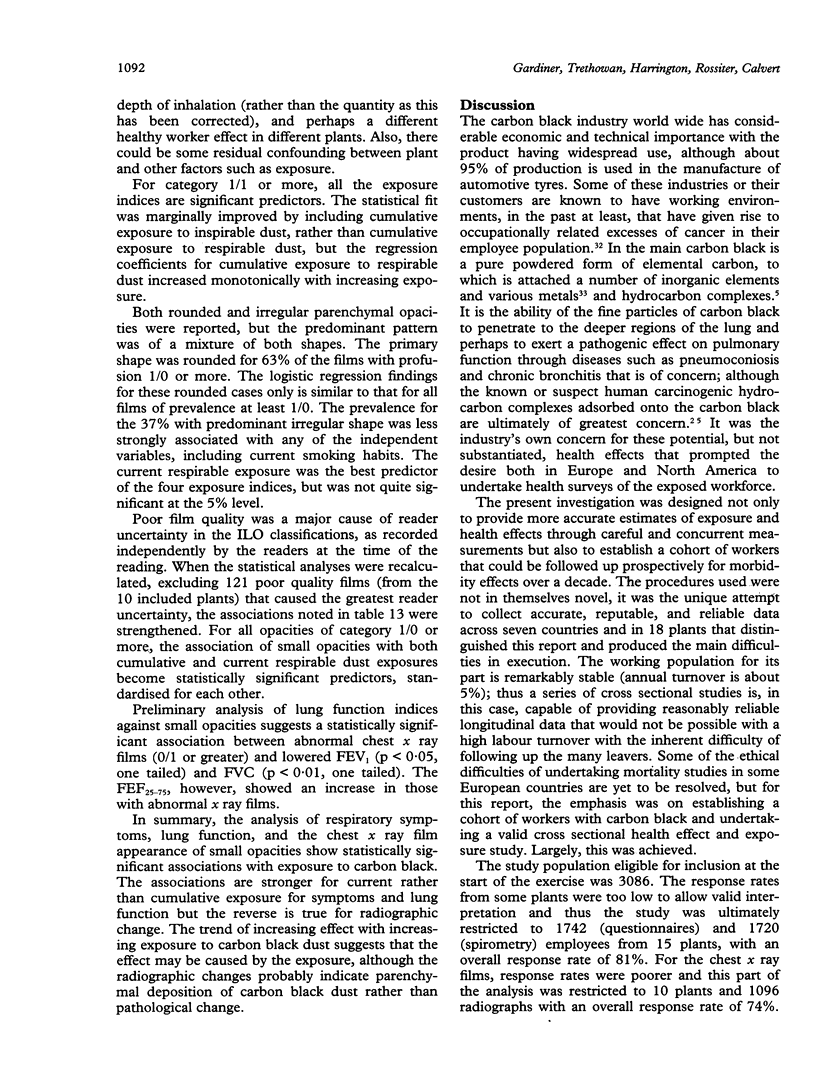
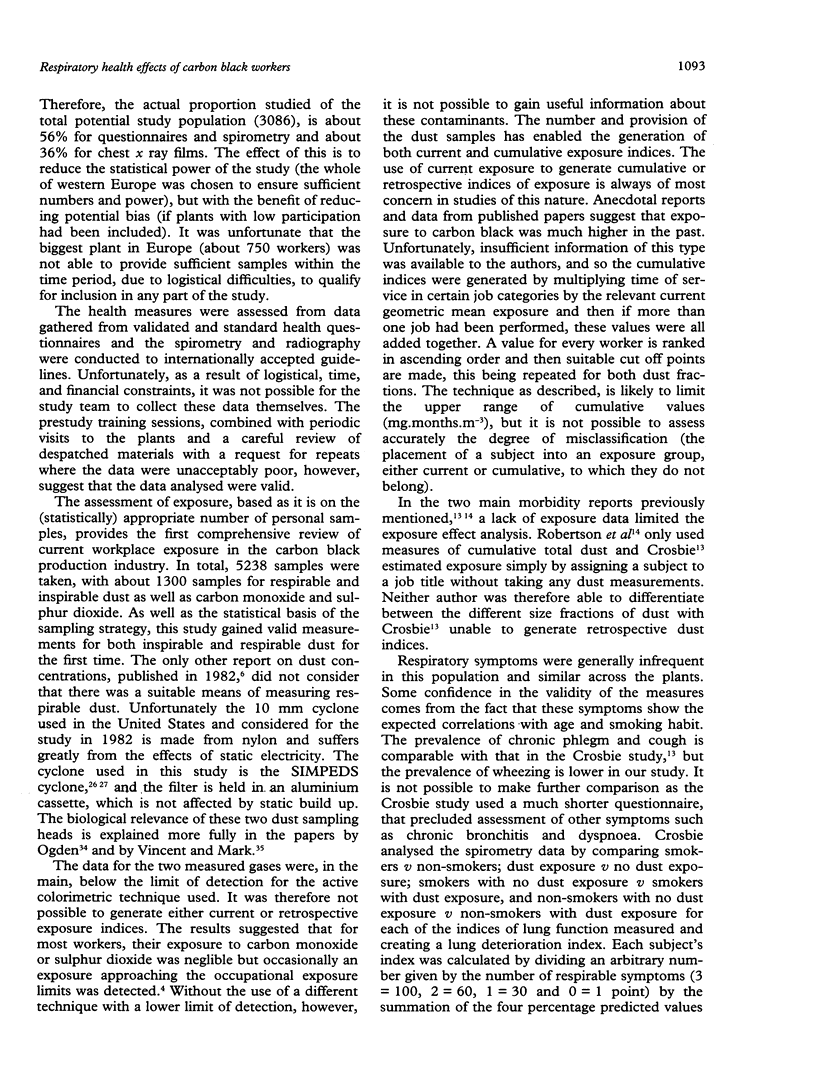
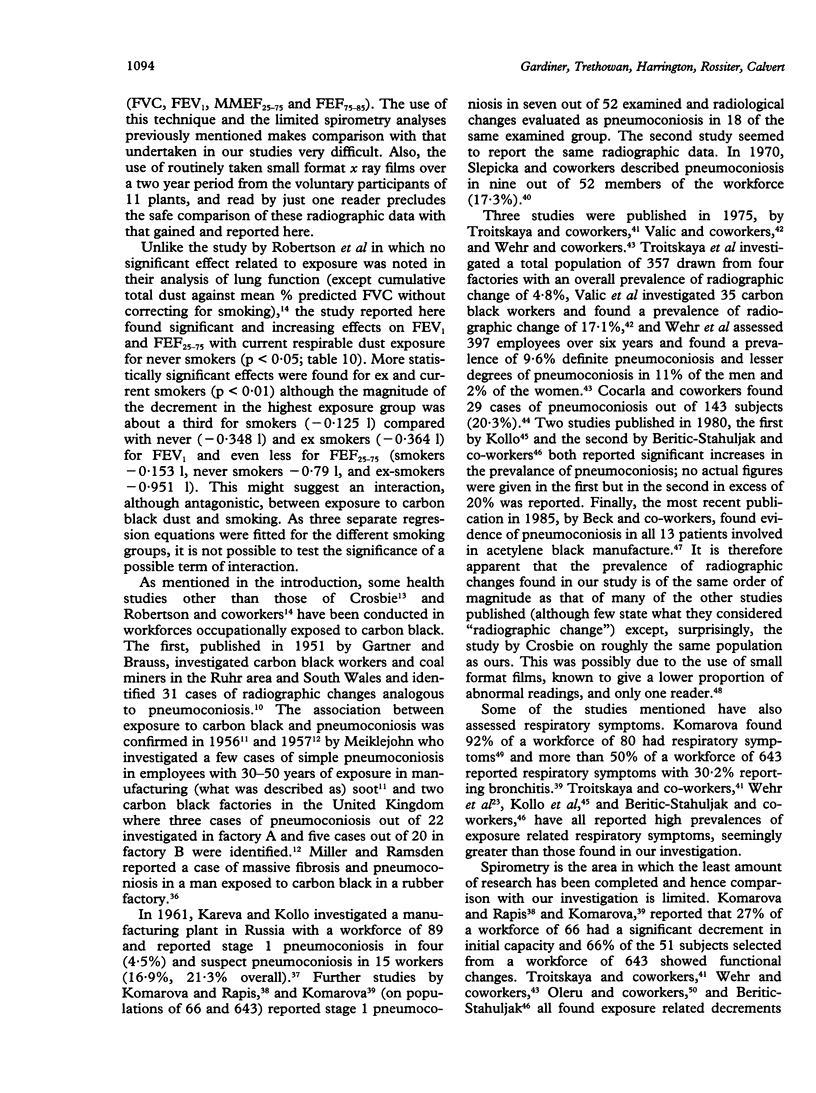
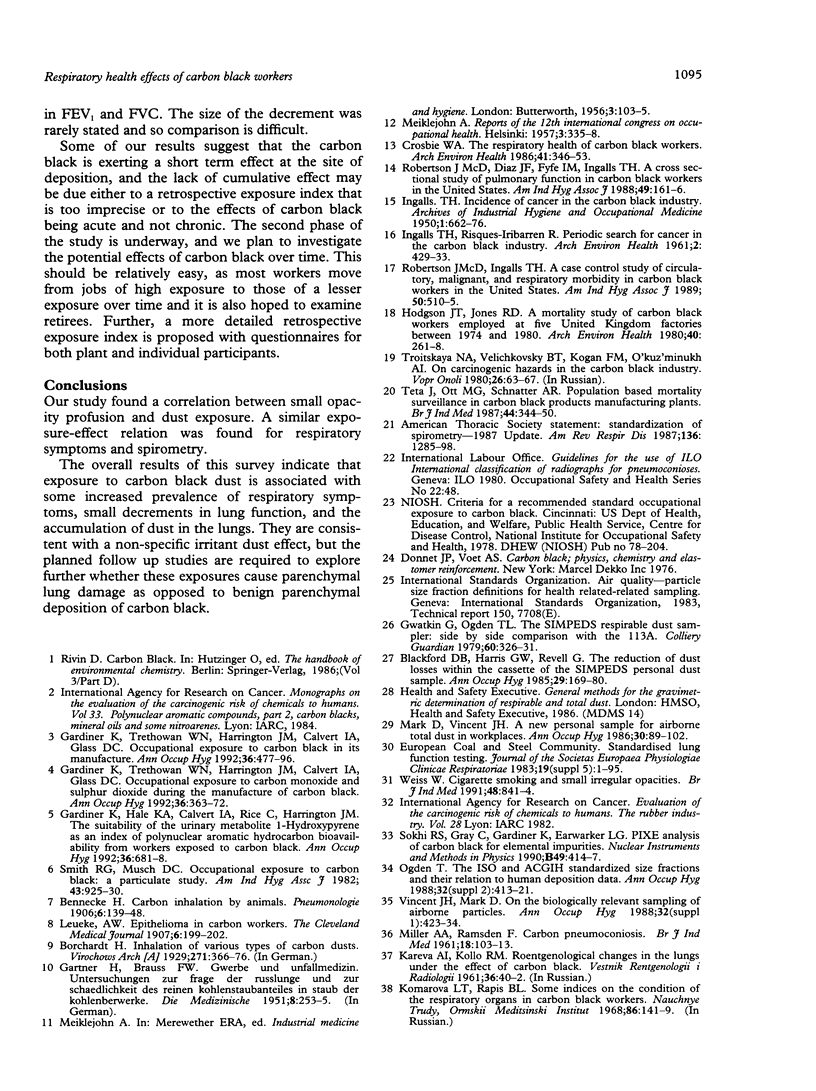
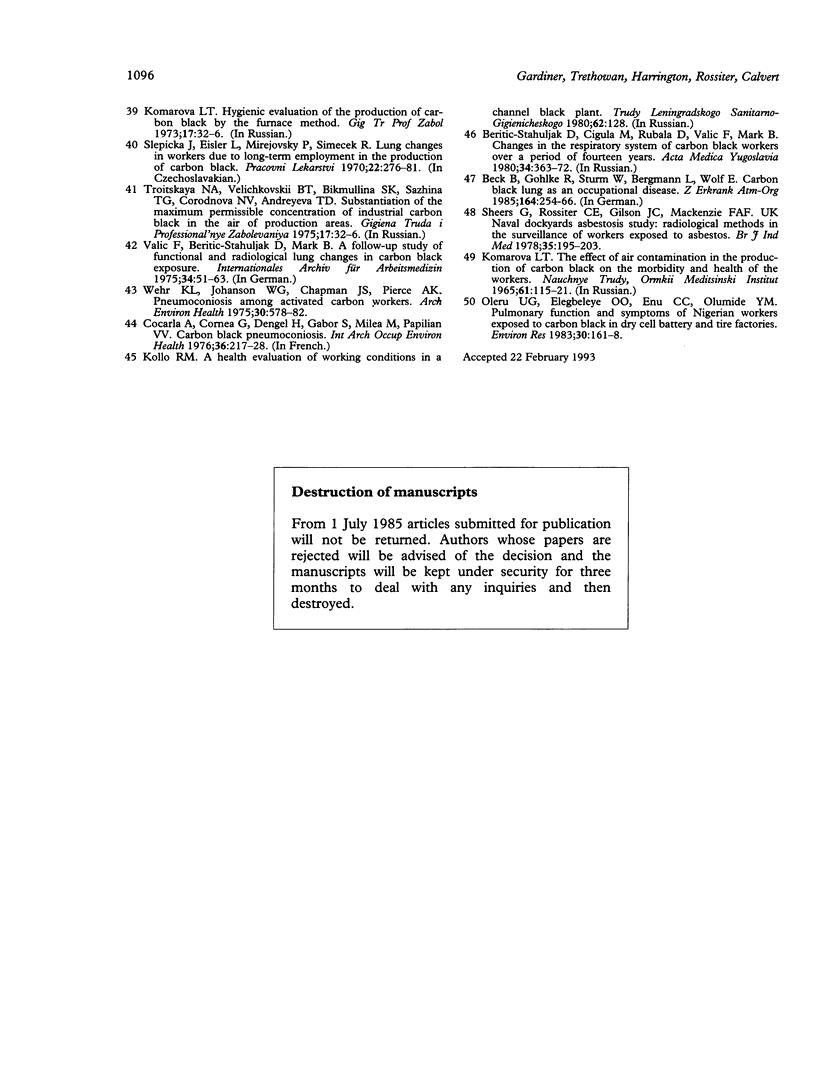
Selected References
These references are in PubMed. This may not be the complete list of references from this article.
- Bailey S., Conchie A., Hiett D. M., Thomas C. Personal exposure to asbestos dust during clearance certification. Ann Occup Hyg. 1988;32(3):423–426. doi: 10.1093/annhyg/32.3.423. [DOI] [PubMed] [Google Scholar]
- Beck B., Gohlke R., Sturm W., Bergmann L., Wolf E. Die Russlunge als Berufskrankheit. Z Erkr Atmungsorgane. 1985;164(3):254–266. [PubMed] [Google Scholar]
- Beritić-Stahuljak D., Cigula M., Rubala D., Valić F., Mark B. Promjene respiratornog sustava radnika u proizvodnji industrijske cade u 14-godisnjem razdoblju. Acta Med Iugosl. 1980;34(5):363–372. [PubMed] [Google Scholar]
- Cocarla A., Cornea G., Dengel H., Gabor S., Milea M., Papilian V. V. Pneumoconiose au noir de fumée. Int Arch Occup Environ Health. 1976 Jan 26;36(3):217–228. doi: 10.1007/BF00378276. [DOI] [PubMed] [Google Scholar]
- Crosbie W. A. The respiratory health of carbon black workers. Arch Environ Health. 1986 Nov-Dec;41(6):346–353. doi: 10.1080/00039896.1986.9935777. [DOI] [PubMed] [Google Scholar]
- Gardiner K., Hale K. A., Calvert I. A., Rice C., Harrington J. M. The suitability of the urinary metabolite 1-hydroxypyrene as an index of poly nuclear aromatic hydrocarbon bioavailability from workers exposed to carbon black. Ann Occup Hyg. 1992 Dec;36(6):681–688. doi: 10.1093/annhyg/36.6.681. [DOI] [PubMed] [Google Scholar]
- Gardiner K., Trethowan W. N., Harrington J. M., Calvert I. A., Glass D. C. Occupational exposure to carbon black in its manufacture. Ann Occup Hyg. 1992 Oct;36(5):477–496. doi: 10.1093/annhyg/36.5.477. [DOI] [PubMed] [Google Scholar]
- Gardiner K., Trethowan W. N., Harrington J. M., Calvert I. A., Glass D. C. Occupational exposure to carbon monoxide and sulphur dioxide during the manufacture of carbon black. Ann Occup Hyg. 1992 Aug;36(4):363–372. doi: 10.1093/annhyg/36.4.363. [DOI] [PubMed] [Google Scholar]
- Hodgson J. T., Jones R. D. A mortality study of carbon black workers employed at five United Kingdom factories between 1947 and 1980. Arch Environ Health. 1985 Sep-Oct;40(5):261–268. doi: 10.1080/00039896.1985.10545929. [DOI] [PubMed] [Google Scholar]
- INGALLS T. H., RISQUEZ-IRIBARREN R. Periodic search for cancer in the carbon black industry. Arch Environ Health. 1961 Apr;2:429–433. doi: 10.1080/00039896.1961.10662877. [DOI] [PubMed] [Google Scholar]
- MILLER A. A., RAMSDEN F. Carbon pneumoconiosis. Br J Ind Med. 1961 Apr;18:103–113. doi: 10.1136/oem.18.2.103. [DOI] [PMC free article] [PubMed] [Google Scholar]
- Mark D., Vincent J. H. A new personal sampler for airborne total dust in workplaces. Ann Occup Hyg. 1986;30(1):89–102. doi: 10.1093/annhyg/30.1.89. [DOI] [PubMed] [Google Scholar]
- Oleru U. G., Elegbeleye O. O., Enu C. C., Olumide Y. M. Pulmonary function and symptoms of Nigerian workers exposed to Carbon black in dry cell battery and tire factories. Environ Res. 1983 Feb;30(1):161–168. doi: 10.1016/0013-9351(83)90175-5. [DOI] [PubMed] [Google Scholar]
- Robertson J. M., Diaz J. F., Fyfe I. M., Ingalls T. H. A cross-sectional study of pulmonary function in carbon black workers in the United States. Am Ind Hyg Assoc J. 1988 Apr;49(4):161–166. doi: 10.1080/15298668891379558. [DOI] [PubMed] [Google Scholar]
- Robertson J. M., Ingalls T. H. A case-control study of circulatory, malignant, and respiratory morbidity in carbon black workers in the United States. Am Ind Hyg Assoc J. 1989 Oct;50(10):510–515. doi: 10.1080/15298668991375083. [DOI] [PubMed] [Google Scholar]
- Sheers G., Rossiter C. E., Gilson J. C., Mackenzie F. A. UK Naval Dockyards Asbestosis Study: radiological methods in the surveillance of workers exposed to asbestos. Br J Ind Med. 1978 Aug;35(3):195–203. doi: 10.1136/oem.35.3.195. [DOI] [PMC free article] [PubMed] [Google Scholar]
- Smith R. G., Musch D. C. Occupational exposure to carbon black: a particulate sampling study. Am Ind Hyg Assoc J. 1982 Dec;43(12):925–930. doi: 10.1080/15298668291410837. [DOI] [PubMed] [Google Scholar]
- Teta M. J., Ott M. G., Schnatter A. R. Population based mortality surveillance in carbon products manufacturing plants. Br J Ind Med. 1987 May;44(5):344–350. doi: 10.1136/oem.44.5.344. [DOI] [PMC free article] [PubMed] [Google Scholar]
- Valić F., Beritić-Stahuljak D., Mark B. A follow-up study of functional and radiological lung changes in carbon-black exposure. Int Arch Arbeitsmed. 1975;34(1):51–63. doi: 10.1007/BF00538928. [DOI] [PubMed] [Google Scholar]
- Wehr K. L., Johanson W. G., Jr, Chapman J. S., Pierce A. K. Pneumoconiosis among the activated-carbon workers. Arch Environ Health. 1975 Dec;30(12):578–582. doi: 10.1080/00039896.1975.10666783. [DOI] [PubMed] [Google Scholar]
- Weiss W. Cigarette smoking and small irregular opacities. Br J Ind Med. 1991 Dec;48(12):841–844. doi: 10.1136/oem.48.12.841. [DOI] [PMC free article] [PubMed] [Google Scholar]


